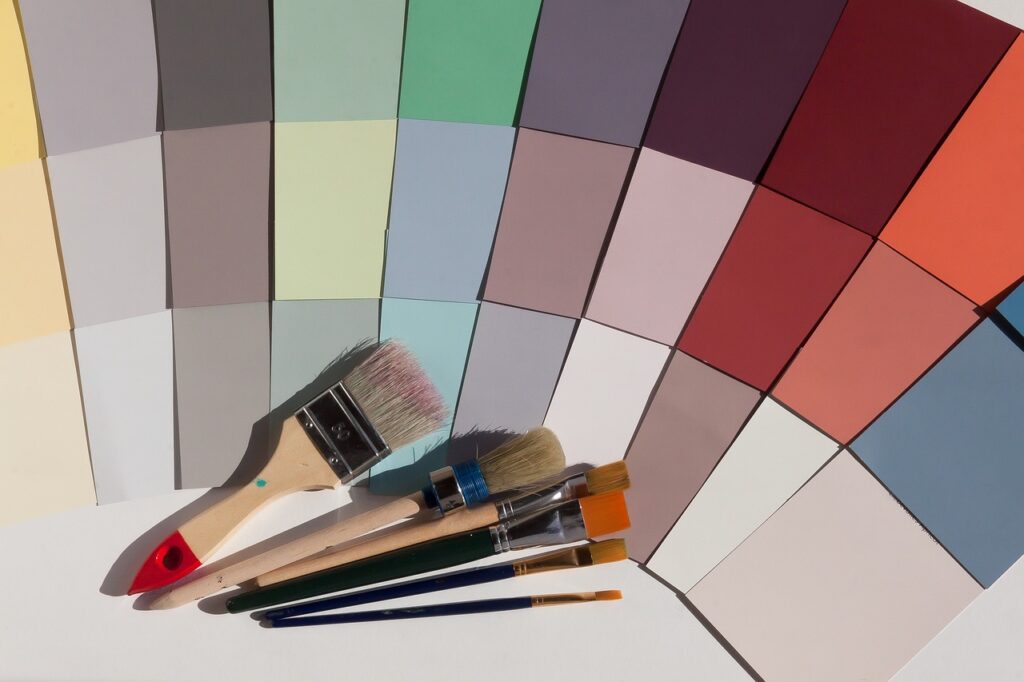Colors are silent yet powerful communicators, weaving a narrative that transcends visual appeal and infiltrates the realm of emotions and psychology. In the landscape of interior design, the strategic selection and application of colors can transform spaces, creating atmospheres that embody serenity, vitality, opulence, or warmth. In this exploration, we delve deep into the enigmatic dialogue between colors in interior design and the human psyche. Unraveling insights that can illuminate the path to selecting the ideal tones for various rooms.
The Emotional Resonance of Colors
Blues and Greens: A Soothing Symphony
Blue, with its oceanic tranquility, and green, echoing the serenity of nature, are famed for their calming effects. In living rooms and bedrooms, these hues weave an atmosphere of relaxation, reducing anxiety and inviting a harmonious flow of energy. They are akin to a visual lullaby, lulling the senses into a state of calm, offering a refuge from the vibrant pulsations of the external world.
Reds and Yellows: The Vibrant Dance
On the opposite spectrum, red, the color of passion, and yellow, echoing the brightness of the sun, are energetic, lively, and invigorating. They find their stronghold in spaces designed for social interactions and creative pursuits, injecting vitality and sparking conversations. However, moderation is key, for an overdose can transform the vibrant dance into overwhelming chaos.
The Functional Alignment of Colors
Cool Tones for Focus
Spaces dedicated to productivity, like home offices, benefit immensely from cool tones. Colors like lavender and soft blues are not just aesthetically pleasing but are also allies in enhancing focus and concentration. The light touch of these tones creates an environment that is conducive to clarity of thought and creativity, a sanctuary where ideas flourish.
Warm Hues for Social Spaces
Dining areas and living rooms adorned in warm hues invite connection, conversation, and warmth. These tones, ranging from earthy browns to rich reds, embody a welcoming embrace, transforming a physical space into an emotional haven where relationships are nurtured, and bonds are strengthened.

Color Integration Techniques
Harmonizing Contrasts
In the art of interior design, contrast is a powerful tool. It’s not about isolated colors but their harmonious integration. The dance between light and dark, warm and cool, soft and bold, creates a visual melody that is both dynamic and balanced. This harmony resonates not just visually but emotionally, each contrast evoking a distinct emotional response.
Textures and Accessories
In the silent narrative of colors, textures and accessories are the unspoken words that add depth and character. While exploring a renovation project, a pair of kevlar gloves can be as essential as choosing the right paint, ensuring safety as hands move gracefully, transforming colors into art on walls. These elements, though often understated, are profound influencers of the emotional and aesthetic dialogue initiated by colors.
Color, A Journey Beyond the Visual
Colors in interior design emerges as an eloquent narrator, a silent yet powerful voice weaving a narrative that transcends the visual to touch the emotional and psychological realms. Each hue, with its unique resonance, impacts mood, atmosphere, and even cognitive functions, making the selection of colors a journey beyond aesthetics to a dialogue with the human psyche.
The Holistic Influence
Colors are not isolated entities but elements of a grand, interconnected tapestry. They interact with light, space, texture, and form to create an atmosphere that is as complex as it is enchanting. In this intricate dance, each hue, each contrast, and each harmony is a note in a visual symphony that lulls the senses, evokes emotions, and crafts an unspoken narrative.
The Evolution of Color Psychology
As the understanding of color psychology evolves, so does its application in interior design. It’s a dance between art and science, emotion and logic, aesthetics, and psychology. In this dance, every hue is a step, every contrast a movement, and every harmony a rhythm, together weaving a dance that is as profound in its visual appeal as it is in its emotional and psychological impact.
Conclusion
In conclusion, colors in interior design are far more than aesthetic choices. They are silent narrators, psychological influencers, and emotional resonators. They are artists painting on the canvas of space, weaving a narrative that touches not just the eyes but the soul. In the artistry of interior design, where the tactile touch of kevlar gloves meets the ethereal touch of colors, a narrative is woven – a narrative where aesthetics, psychology, and emotion dance in unison, crafting spaces that are visually enchanting, emotionally resonant, and psychologically attuned.
This post is a collaborative effort and may contain relative and relatable affiliate links. All opinions are our own and for informational purposes only.

